Affiliate links on Android Authority may earn us a commission. Learn more.
HUAWEI Mate X vs Samsung Galaxy Fold: Who did the foldable phone better?
Published onFebruary 27, 2019
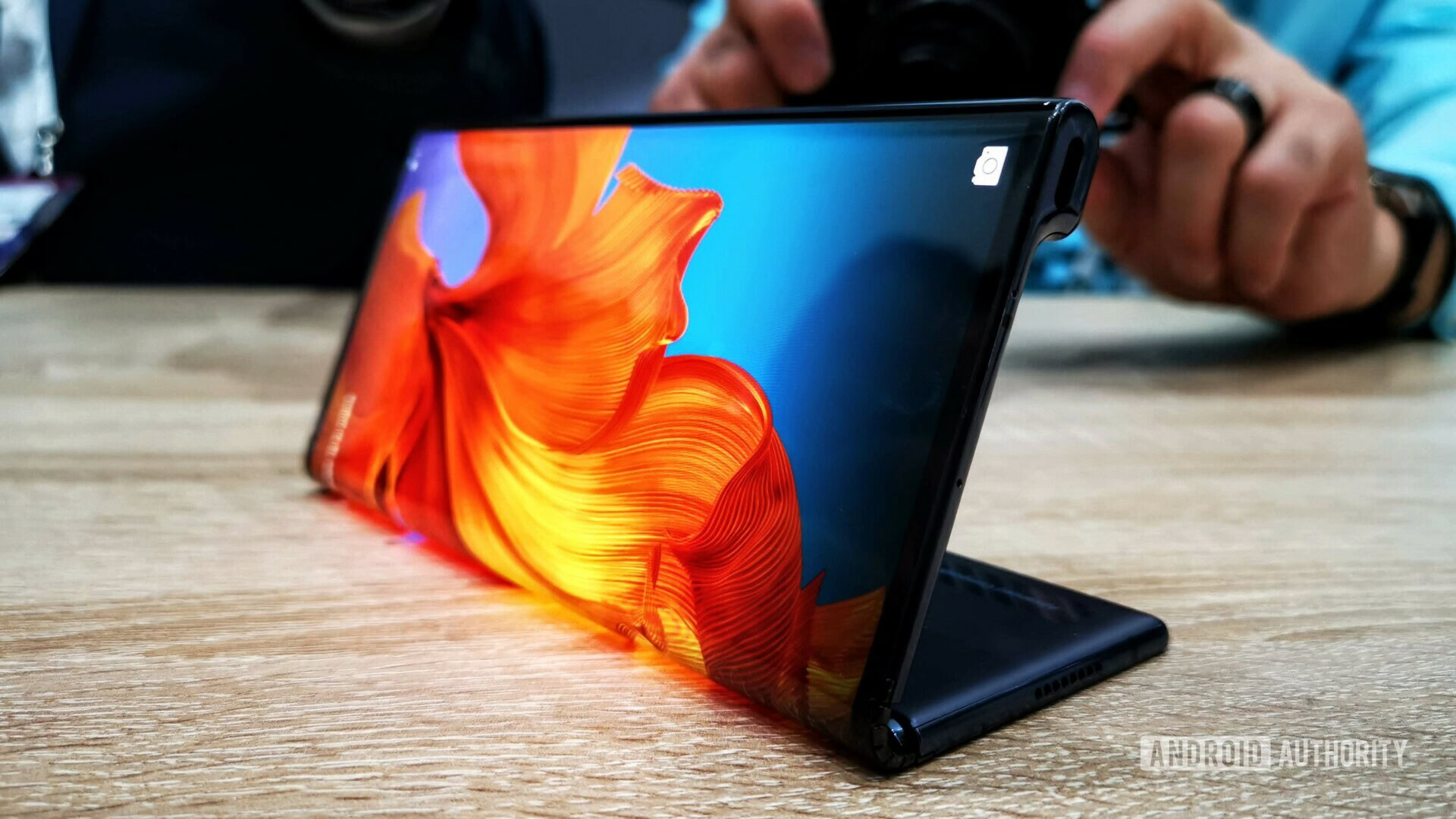
MWC 2019 has kicked off and it’s looking like the most exciting iteration in years, in large part due to the presence of foldable phones. The two leading devices are undoubtedly the Samsung Galaxy Fold and the HUAWEI Mate X, representing a new phase in the war for Android supremacy.
The nascent nature of this device segment means that we’re also seeing a variety of unique form factors, as evident by HUAWEI and Samsung’s. But which company delivers a better design? In this HUAWEI Mate X vs Samsung Galaxy Fold comparison we take a closer look at how the two foldables differ.
Different solutions to the same challenge
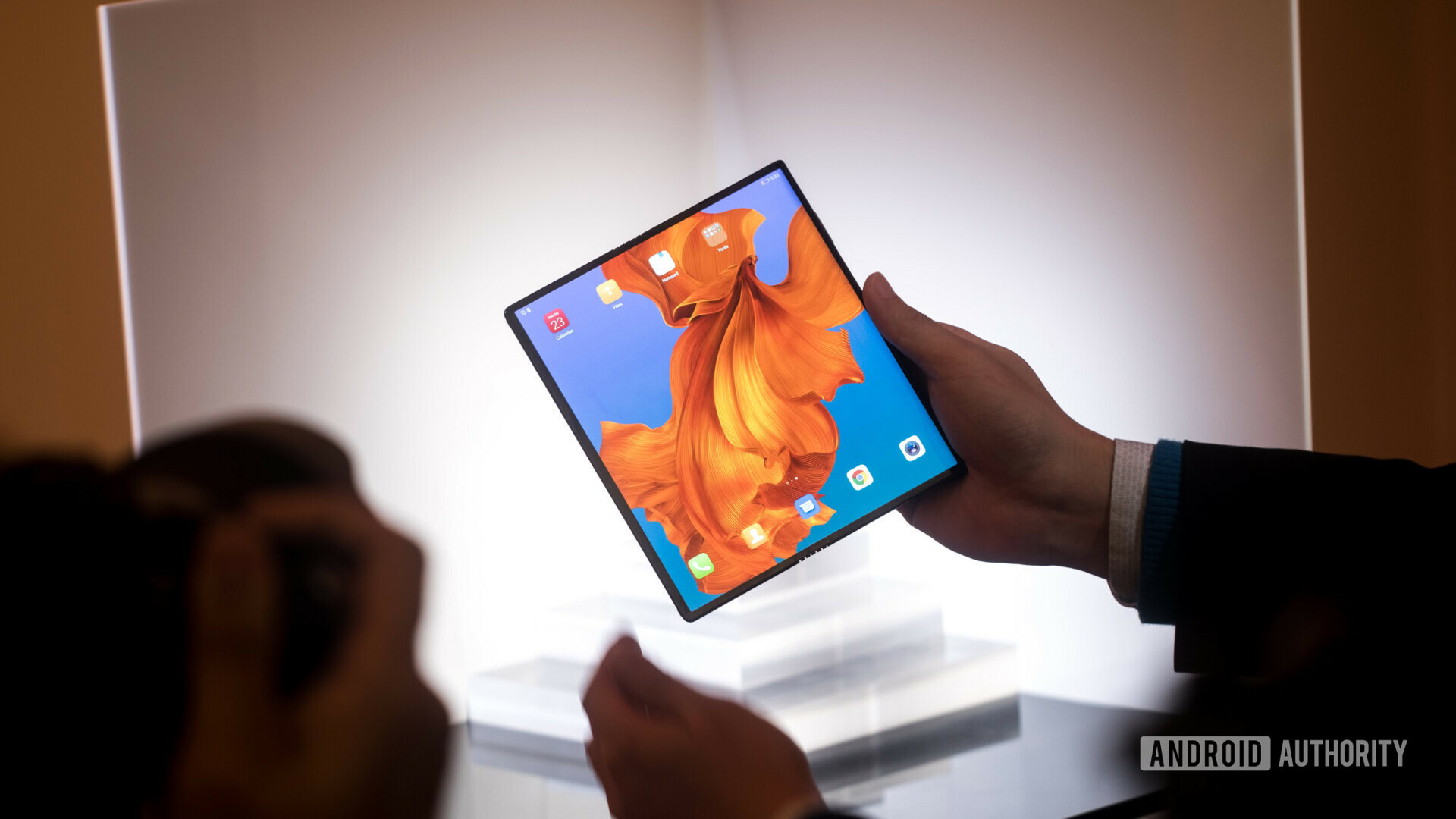
In typical Huawei fashion, the Mate X is bigger and arguably better than what Samsung has to offer. Whether we actually need what either of the companies is selling – or will be selling, eventually – is very much open to debate, but the foldable phone race just got real.
The Mate X made its brief debut in a crowded room full of jostling journalists, fighting for a better view. But unlike most product briefings, we were not allowed to touch the device or try it for ourselves. Instead, we were guided through a demonstration of its various form factors from a distance, quite literally behind a velvet rope. At a later briefing we were able to spend a little time touching the device, but certainly not enough time to call it a full a hands-on.
Read: Qualcomm promises first chipset with integrated 5G coming in 2020
Where Samsung put its foldable display on the inside, HUAWEI put it on the outside. This approach means the Mate X is a single 8-inch flexible display that folds in half to produce two outward-facing smaller displays: one that measures 6.6-inches on the diagonal and another measuring 6.38 inches. By comparison, the Galaxy Fold folds its 7.3 screen inwards, meaning Samsung had to add another 4.6-inch screen (with massive bezels) on the outside so you can actually use it when it’s closed.
There are benefits and shortfalls to both solutions: Samsung better protects the Fold’s interior screen from scratches while HUAWEI ‘s exterior fold creates a phone that is completely flat whether it’s open or closed. HUAWEI also only uses a single panel to achieve what Samsung achieves with two.
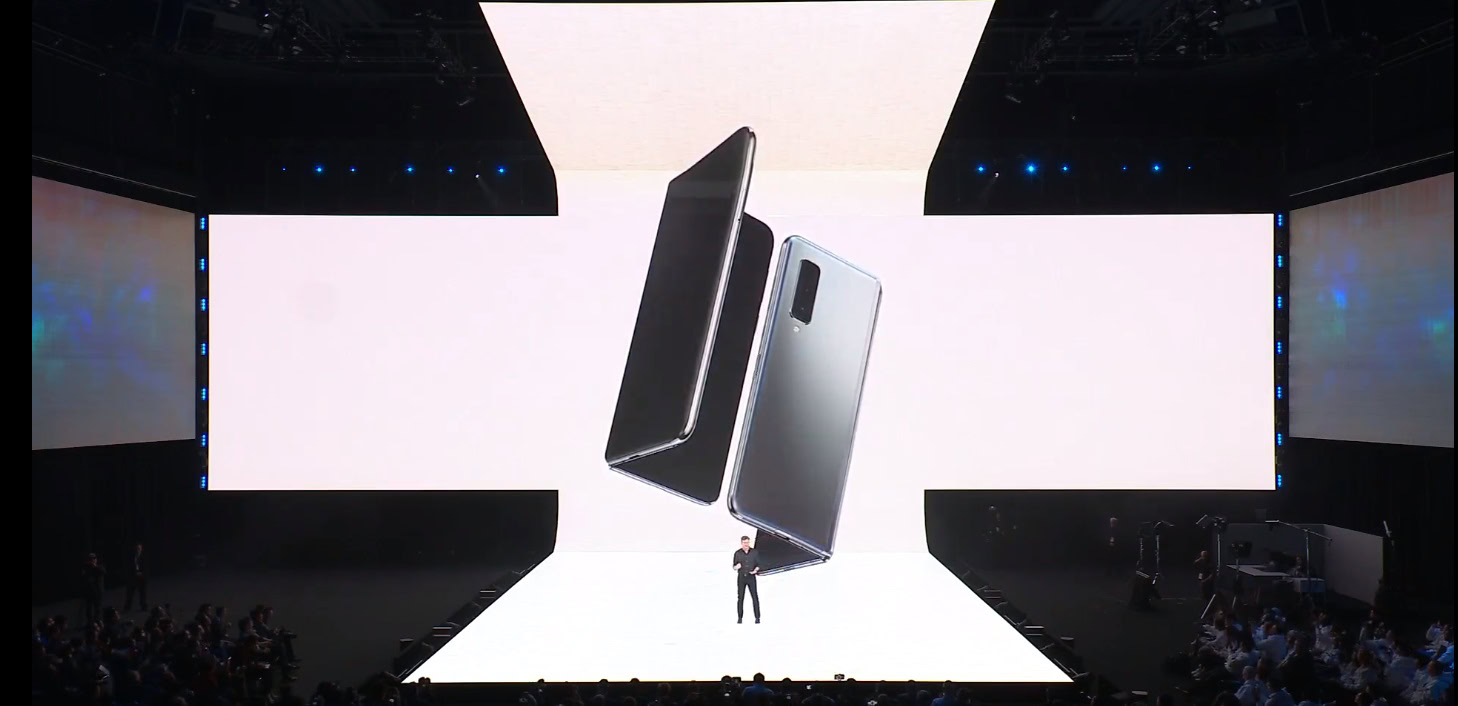
Like any material, a flexible display that is constantly folded and unfolded is prone to degradation over time. That’s why both companies avoid a sharp crease where the screen folds, opting for a curve instead. HUAWEI clearly thinks the curve makes more sense on the outside, which from an aesthetic industrial design perspective makes sense. Samsung seems less interested in making the Galaxy Fold perfectly flat than it does in protecting the display, which is an equally valid attitude.
The interior-vs-exterior fold debate is destined to take its place alongside other unwinnable arguments like front-facing vs rear-mounted fingerprint scanners and whether or not to use a case. The fact that two of the largest smartphone manufacturers in the world have completely opposite solutions to the same problem only serves to prove that there is no clearly superior approach (yet).

The other big difference between the Galaxy Fold and the Mate X is the notch. Samsung puts a rather large notch in the upper right-hand corner of the screen when unfolded to hold various cameras and sensors. HUAWEI takes a very different route, putting its three cameras in a grip of sorts, so there’s a wide bezel on one side of the “rear” screen.
Because of the Mate X’s outward-facing triple cameras when in tablet mode, you won’t be able to video call unless you’re in phone mode. Samsung has cameras everywhere, six in total, so it’s possible to video conference on the large screen as well as on the small one. But HUAWEI’s out-folding design and grip-mounted camera arrangement means that, when folded in phone mode, you can take selfies with the primary cameras and still see yourself in a screen.
What about the specs?
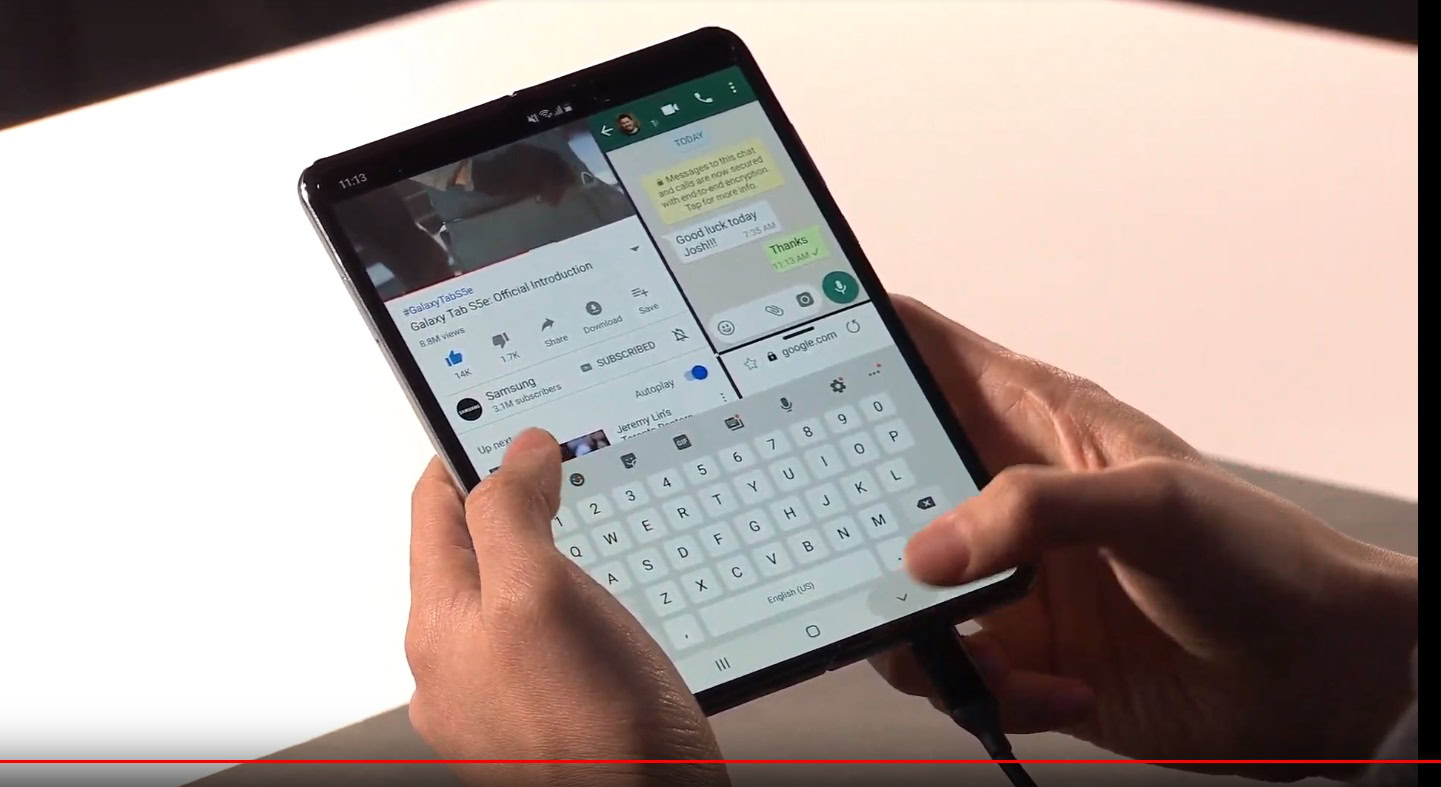
When it comes to the all-important spec sheet, the Galaxy Fold is looking every bit like a 2019 super-phone. That means an unspecified 7nm processor (likely the Snapdragon 855, as the Exynos 9820 is an 8nm chip), 12GB of RAM, 4,380mAh of juice, and 512GB of flash 3.0 storage.
Moving to the all-important screens, Samsung’s device offers a 4.6-inch HD+ Super AMOLED screen (21:9) on the outside when in phone mode. Unfolding the device yields a 7.3-inch QXGA+ Dynamic AMOLED display, giving you more real estate to work with.
Samsung’s foldable is also touting six cameras, featuring a 12MP+16MP ultra wide+12MP telephoto on the rear, a single 10MP selfie camera above the smartphone screen, and a 10MP+8MP pairing in a notch above the tablet screen.
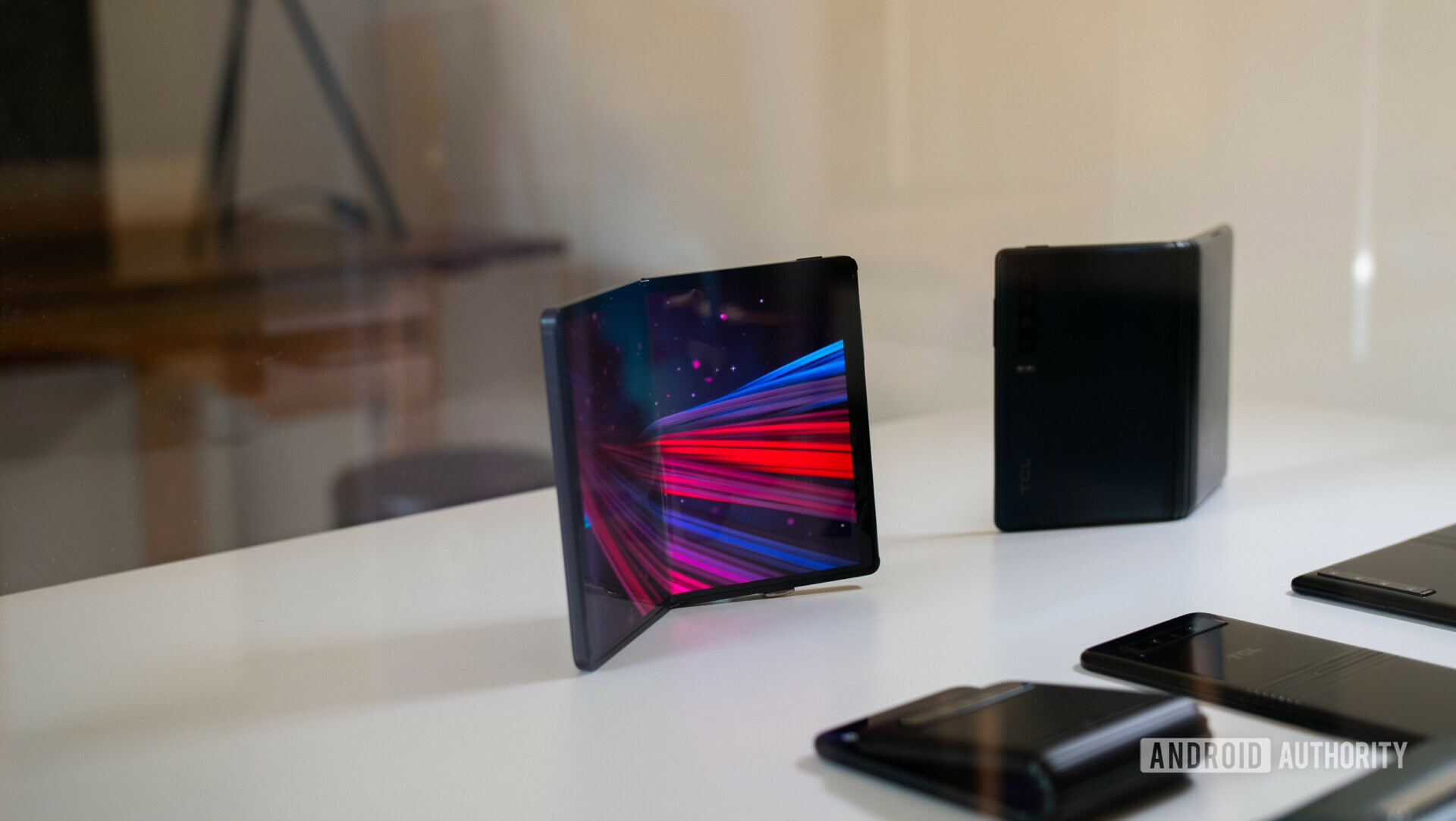
Meanwhile, the Mate X offers a Kirin 980 chipset, 8GB of RAM, 512GB of storage, 4,500mAh of juice (reaching 85 percent capacity in 30 minutes), and a fingerprint scanner embedded in the power button.
As for the screen arrangement, we’re looking at a 6.6-inch front screen for the smartphone form factor (19.5:9 2480×1148), a 6.38-inch rear screen (25:9 2480 x 892) so your friends can see themselves when you take photos of them, and an 8-inch AMOLED screen when unfolded (8:7.1, 2480 x 2200).
Read more: A few Mate X musings after finally getting to touch it
Huawei’s foldable also differs from Samsung’s device when it comes to photography, featuring the Mate 20 Pro‘s triple rear camera setup (40MP+16MP ultra wide+8MP 3x telephoto).
The Galaxy Fold’s Snapdragon 855 and 12GB RAM combo seems to edge out the HUAWEI device’s Kirin 980/8GB pairing on paper. It remains to be seen whether this advantage would have any bearing on real-world performance, but the multi-screen nature of these foldables means that horsepower will certainly be critical.
So who did it better?
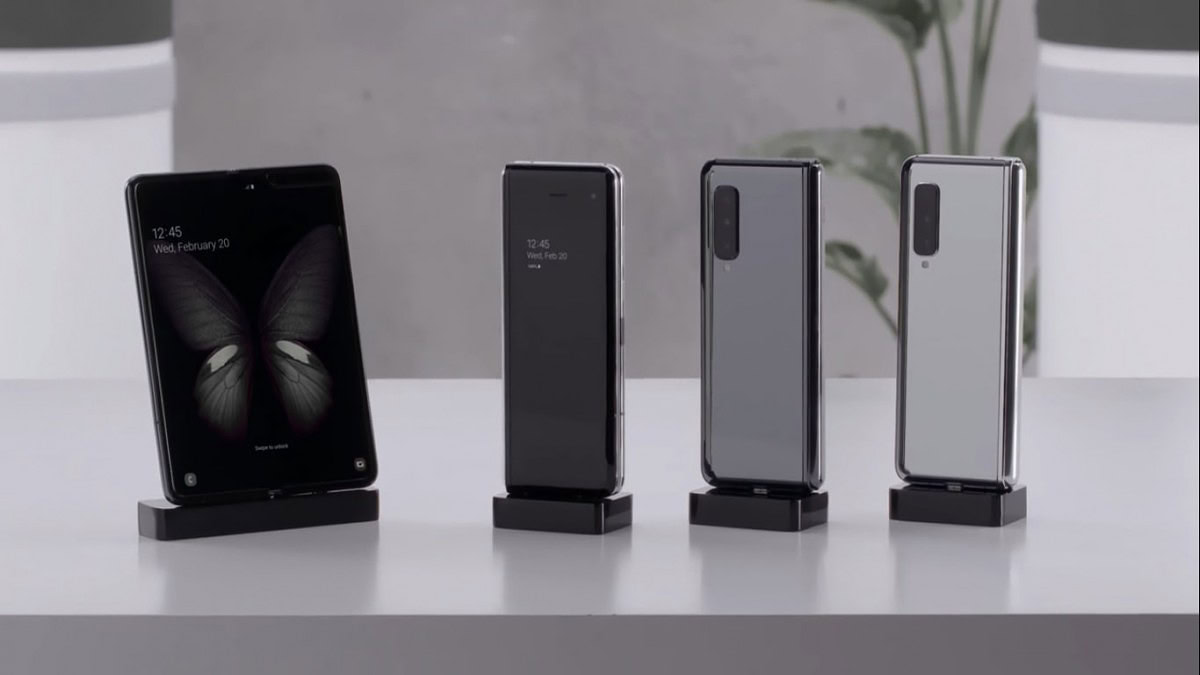
It’s clear both Samsung and HUAWEI are offering interesting, practical solutions to the foldable phone challenge. Samsung’s decision to add an extra screen on the outside means your Galaxy Fold’s tablet display should be well-protected from scratches, while HUAWEI’s approach means you don’t need an extra display in the first place.
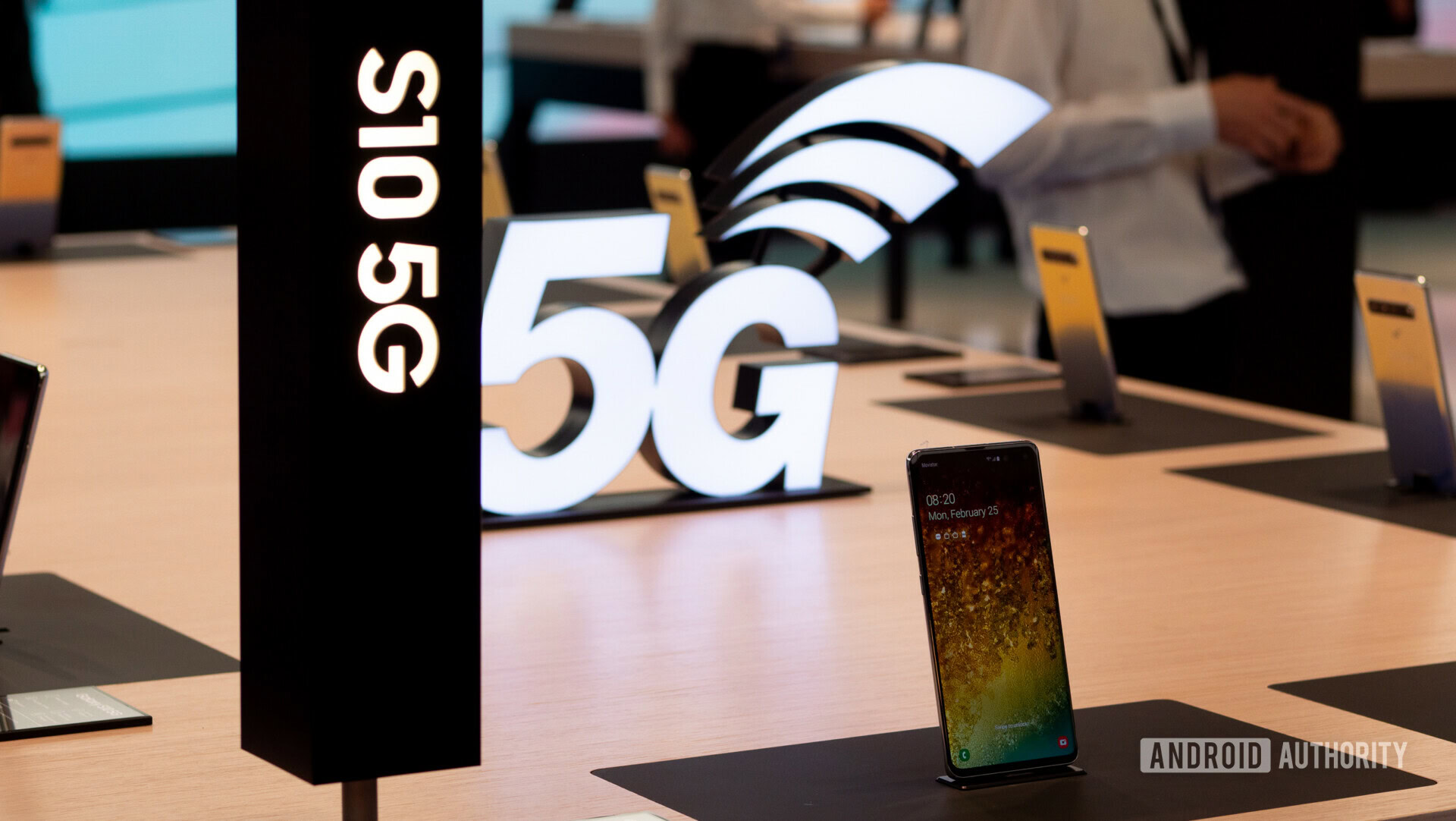
The Chinese brand may have taken the quality over quantity route when it comes to the cameras. The Mate X doesn’t have the most shooters, and you can’t use cameras in tablet mode, but the grip-mounted setup makes the most out of the foldable form factor. Meanwhile, Samsung just went ahead and added a camera on every side — not that there’s anything wrong with this approach at all.
But “making the most” seems to be a theme for HUAWEI’s Mate X, as it eschews the extra display and cameras in favor of a more measured approach to the foldable. Samsung, meanwhile, has opted for the “everything but the kitchen sink” approach, giving us a multi-camera, multi-display folio that brings to mind the Nokia Communicator. But we’ll definitely need to spend more time with each device before making a final verdict.
Which design do you prefer so far, and why? Let us know in the comments.
NEXT: Samsung Galaxy Fold is just for rich people, and Samsung knows it